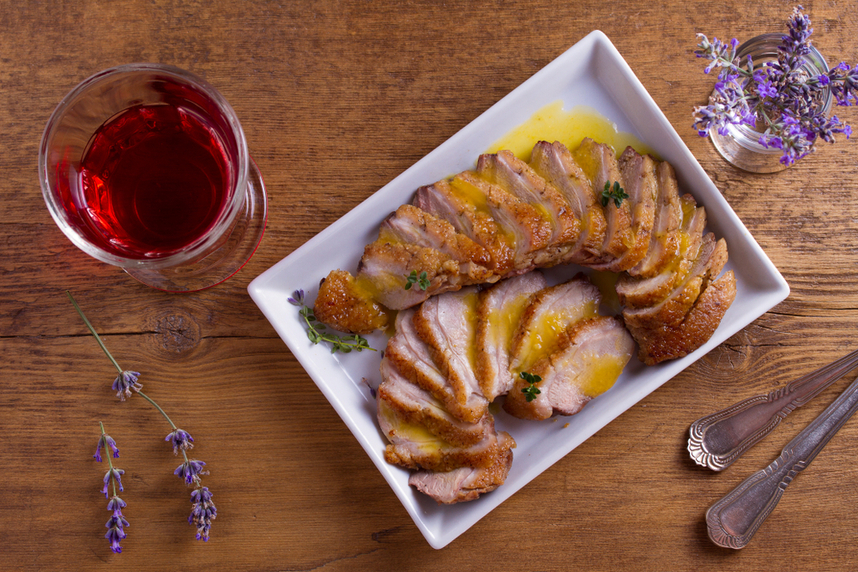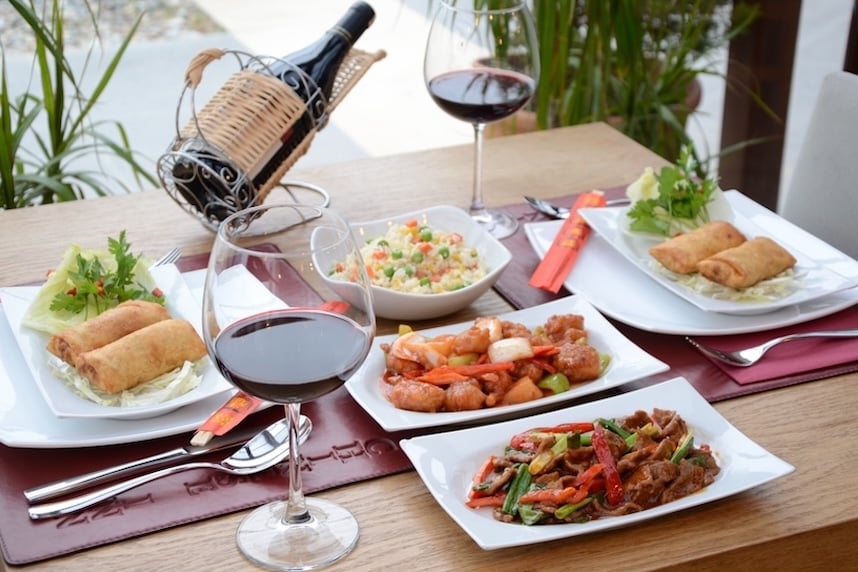In gastronomy, there are elements that are considered best not to mix together: fish and cheese, carbonara and cream, pineapple and pizza. For some wine lovers, wine and Chinese cuisine also live on two different planets, due to the distinctive features of the latter: unctuous textures, intense flavours and a massive use of spices (ginger, chilli, cumin, garlic, and a mixture of Sichuan pepper, fennel seeds, star anise, cloves and Chinese cinnamon).
In the face of this organoleptic complexity, is the pairing of wine and Chinese cuisine really possible? Here is a guide to find out!
Wine and Chinese cuisine: the general rules
When trying to create a balanced combination of food and wine and dealing with ingredients that are difficult to match, being guided by personal taste can lead to sensory disasters. This is why it is essential to select products with these characteristics when choosing the best wines for Chinese cuisine:
- Aromaticity: the spicy flavours typical of Chinese cuisine require wines with a good aromatic component, i.e. characterised by intense aromas reminiscent of the grape variety to which they belong. An aromatic wine has the ability to accompany dishes with great intensity, enhancing their scents without being obscured by them.
- Acidity: those characterised by a good acid component are the best wines to pair with Chinese dishes characterised by fried food and rather fatty condiments. A wine with these traits (usually white or sparkling) helps to degrease the palate from greasy textures and give a sense of freshness to the tasting.
- Low alcohol content: Spicy or spicy dishes do not get along well with wines with high alcohol content, which amplify the intensity of flavours and spiciness too much, weighing down the palate with unbalanced or even unpleasant notes.
- Contained structure: the same applies to wines with a large structure and a high level of tannins (responsible for the body and astringent aftertaste), which are suitable for intense dishes, but not for very spicy or piquant ones.
Jiaozi, baozi and wine: which bottles to uncork
It is not unusual for a Westerner to confuse jiaozi and baozi, partly because of the similarity between the two names, partly because of their similar appearance. However, they are two distinct preparations, typical of the Chinese gastronomic tradition and nowadays also extremely popular in ethnic restaurants in the rest of the world.
Jiaozi, typical Chinese dumplings
Jiaozi - also known by the international name of dumplings - are dumplings usually steamed or grilled, made by filling and folding discs of puff pastry. Legend has it that they originated around the 2nd-3rd century BC, when a local doctor decided to give them to the people to combat a flu epidemic (and apparently it worked!). Indispensable as an appetiser in ethnic restaurants, jiaozi exist in an unbelievable number of variations, but the most popular versions feature a filling of spiced pork or vegetables.
Among the best wines to pair with Chinese ravioli, Pinot Grigio Delle Venezie DOC is the perfect example: this aromatically good white wine has all the right qualities to support the strong flavours of these tasty dumplings, including a bouquet of tropical fruit, green apple and flowers and a slightly almondy aftertaste, which makes the tasting more complex and intriguing.
Baozi, soft and tasty dumplings
Similar in shape and construction are the baozi, which, however, can be compared more to stuffed rolls than to dumplings. Their origin is also linked to legend: it is said that they were created as a hearty and easy meal for travelling soldiers. It is also said that they were created in the shape of a human head, to address a local religious belief. When crossing a river, armies would have to sacrifice 49 men, but they got around this by throwing the same number of anthropomorphic-looking buns into the water.
The similarity with jiaozi can also be seen in the enormous variety of fillings (even sweet), among which the most popular are those made with pork, vegetables and prawns, all of course seasoned with plenty of spices. The ideal wine to stand up to this riot of flavours is still a white, a Riesling Oltrepò Pavese DOC, fresh and fragrant, characterised by a straw-yellow colour tending to green and an aromatic charge reminiscent of flowers and white-fleshed fruit. The palate confirms its refreshing identity, with a savoury aftertaste capable of holding its own against the intense flavours of baozi.
The best wine to drink with a hot pot
The combination of the concept of food and that of culture, affiliation, conviviality is best expressed in the hot pot, a gastronomic practice typical of the Chinese culinary tradition. Literally 'boiling pot' (huǒguō in the original language), it consists of placing a saucepan full of hot broth in the middle of a table, in which diners can cook numerous raw dishes that are served to them, including morsels or slices of meat (mutton, pork, venison, beef and chicken), vegetables and mushrooms, eggs, fish, meatballs and much more, accompanied by condiments and sauces. In other cases, the food is placed in the centre of the table already cooked.
More a ritual than a simple meal, the hot pot tradition developed in China between the 3rd and 5th centuries and is said to have been particularly popular among the Mongols, who used to cook broth inside their helmets. The consolidation of this custom then led to the emergence of numerous variations.
This sort of 'fondue' really pleases everyone's palate with its versatility and varying degrees of flavour and spiciness, which is why the choice of wine can also vary. A good proposal is, for example, a Prosecco DOC, aromatic and acidulous enough to support the spicy and challenging hints.
Intriguing with its aromas of linden blossom, green apple and grapes, this wine refreshes the palate between bites with its subtle effervescence and the lively touch conferred by good flavour.
Alternatively, an unstructured Sicilian wine with light tannins, such as a Nerello Mascalese Rosato Terre Siciliane IGT, with its bewitching aromas of red fruits and flowers and a sip of remarkable savouriness, which brings to mind very particular herbaceous notes, is also well suited to this preparation.
And with Peking duck?

Closing this wine guide to Chinese cuisine is a tasty main course such as Peking duck, one of the most famous Chinese meat dishes in the world. Originating in China in the 14th century, this recipe was particularly popular at the imperial court and was later perfected during the Ming dynasty. Originally, it was mainly the skin that was eaten, carefully removed from the rest of the meat and brushed with a honey-based mixture, but today it is commonly served with the meat, along with pancakes and a sauce made from soy, honey, apple cider vinegar and sesame seed oil.
As far as the pairing of wine and Peking duck is concerned, the time has finally come to 'disturb' a full-bodied red wine with remarkable organoleptic power, such as a Terre Siciliane IGT Syrah. Decisive right from its colour - an intense red tending towards violet - this product conquers the senses with a gritty bouquet of ripe fruit and an enveloping, complex taste that arrives pleasantly spicy on the palate. A true marvel to bring to life the poetic encounter between Chinese cuisine and Italian wine tradition!
Now that Chinese cuisine is no longer a mystery to you, it's time to explore the Giordano Vini catalogue and try some pairings!
 Free Delivery from 69£
Free Delivery from 69£
